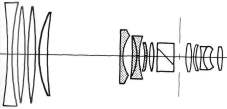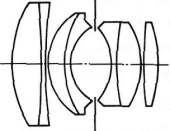|
Here is the new site for products and service: |
||||||||||||||||||||||||
|
movie.project-consultant.net |
||||||||||||||||||||||||
|
|
||||||||||||||||||||||||
|
|
||||||||||||||||||||||||
|
Super8 technology - film.project-consultant.net Mike´s cams |
|
last modification: february 10th, 2012 |
|||||||
|
Brightlight or Lowlight XL camera? - the difference |
|||||||
|
Sorry, this page has almost only text.... |
|||||||
|
at the end you will find my own view of this stuff... |
|||||||
|
Very often users ask me following questions: Which type of camera shall I buy? Answer: To be flexible: both types, but it depends of..... Can I expect sharp pictures from XL cameras? Answer: In general: Maybe, but it depends of.... Dependant from preferencies and conditions, see two excamples:
It´s hard to give a definite answer! To give some clearance I have written some technical explanations..... |
|
Fine grain Super8 films have a low film speed and needs a lot of light. In practice we do not have enough natural light often in winter time, late afternoon, early evening or bad weather conditions for this films. Physical dependencies and corresponding camera construction determines the special qualities of a camera and your films:
|
|
Some basics and rules to understand the physics:
|
|
|
||||||||||||||||||||||||||||||||||||||||||||||||||||
|
Objective for lowlight cameras: increasing the useable light ! a) decreasing light loss in lowlight camera construction Light loss in a normal reflex camera with TTL feature:
(Beaulieu´s guillotine shutter with his mirror do not reduce the light which can pass onto the film. But this cams have high shutterspeeds and are NOT lowlight cameras...) b) longer shutterspeeds
Engineers started to construct cameras with extra low or existing light (XL) feature. At these years a zoom lens for Super8 cameras was common standard and requested by the market. Unfortunately (also today) a lens with a high zoomfacter 6:1, 8:1 and more was a status symbol but mostly not really necessary (only for wildlife or special zoom effects). Features like parallaxfree reflex viewfinder, TTL metering and automatic aperture settings are very comfortable . But all of this features lowers the amount of light which passes to the film. Against better technical knowledge these features are also to find in XL Super 8 cameras to prevend the homeusers for overcharge .
Changements depending of model were made: In total these changements increases the light which passes through the filmgate. A "lightwin" - comparable like one or more fstop is realized. Due to marketing reasons manufactorers have combined also lenses with large zoomfactors together with XL-shutters. |
|
Wow, a lot of technical stuff! Hope you are ready now to decide by yourself. |
|
My personal view: a) If you want to get a universal camera select one with a shutteropening of 180 - 200°. b) If you want a camera with best lowlight possibilities select one over 200°. Have a look for your requirements: for zooming, select lenses with best opening factor and all other features you want to own. c) If you want a camera for brightlight conditions look for acamera with shutters below 180°. Keep in mind also your other requirements..... But be aware: the overall "best" camera does not exist! Of cause the more expensive XL(S) Canons are fine universal cameras. But like any "universal" it must not be the best for a special tasks... Very fine lowlight "XL" Super8 cameras are made by BAUER (XL series), BEAULIEU (6008,6028), CANON (electronic: 814 and 1014), CHINON (pacific200/12XL), COSINA (professional series), ELMO (612, 1012), MINOLTA Nizo (integral, 1048 to 6080) and SANKYO. For special features and modifications please see ADAMS64. Professionals who are familiar with all this technical stuff knows: The best lowlight camera does not have any beamsplitter for TTL or viewfinder. But a lens with good opening factor (also interchangeable fix focus) with few lensgroups - like some 16 or 35mm professional moviecameras or old Normal 8 cams. For making films in real lowlight conditions I own a budget KODAK camera without any beamsplitter and TTL metering. For sharp picturestanding I have modified the filmpressure and also added a "+/- correction" for automatic aperture setting. With this camera I (and a friend) have made several fine filmscenes and had never problems with a parallaxfree viewfinder! If I need other features like fades, backward filming or different fps I currently use my modified BAUER A508 combined with another XL lens f1.2 7-42mm (with only few lensgroups). This gives me some more light than the original A508 or A512 lens. And of cause I own some other cameras for using in bright light condition. Each for a special task.....
|
| [S8 technology NEWS] [Old S8 techguide] [Film / HDV] [Tips for buyers] [bright / lowlight] [ASA DIN ISO] [Wratten filter] [shutter - speed - fade] [some tech - tips] [fungus] [sound and sync] [cameras for usage] [Links Contact] [my camera and Kodak] [long filmreels..] [Camera Store] [table: ASA -cameras] [Adams64 new cams] |

